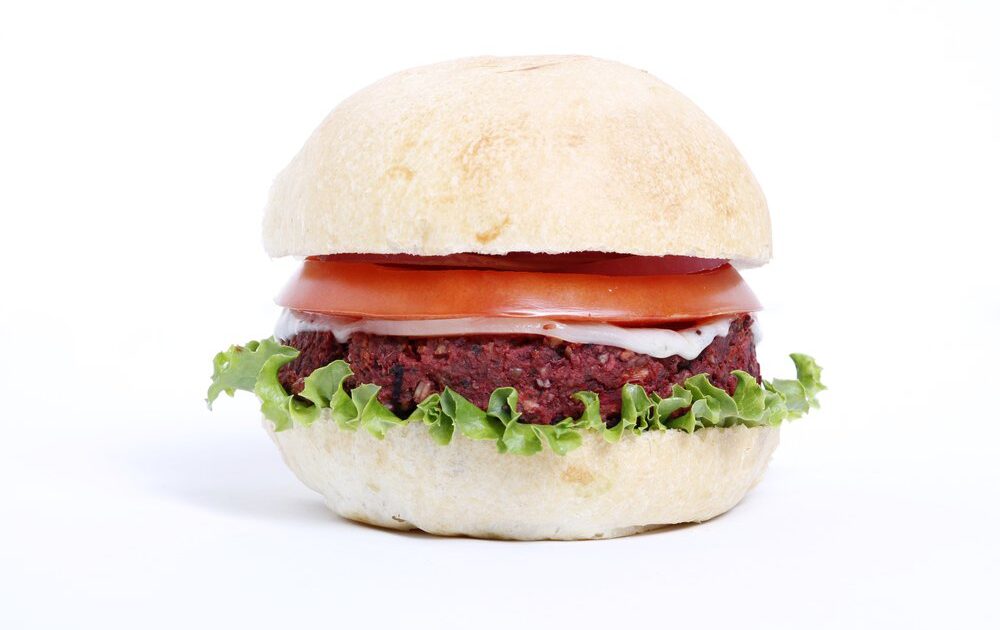From Tofu to Tofurky: The Evolution of Mock Meats

When Tofurky founder and president Seth Tibbott started the company in 1980, the mock meat industry looked very different than it does today. According to Tibbott, three decades ago convenience health food didn’t exist. If you wanted a veggie burger, you made it from scratch.
Using a personal investment of $2,500, Tibbot started making and manufacturing tempeh, a fermented soy product. He first learned about tempeh from an intentional vegetarian community called the Farm, where he had been living in southern Tennessee. Tibbott, who today still gets the starter to make tempeh from the rural community, says that it’s likely that many of the larger vegetarian food companies were originally inspired by the Farm. They grew their own soybeans and made tofu and tempeh. They were also among the first to make soy milk and soy ice cream.
It was around the same time in 1981 that Oregon restaurateur Paul Wenner started turning leftover vegetables and rice pilaf scraps into veggie burgers. Gardenburger was the first company to bring veggie burgers to the mainstream before it was joined by competitors Boca Burger and Morning Star Farms a decade later. In the ’90s mock meats began to move from a fringe industry, supported by local and regional health food stores, to the mainstream. Tofurky would also see real success starting in the ’90s.
“We had just been making tempeh before, but in 1995 we introduced Tofurky,” says Tibbott. “It was a buzzword and the name caught on. Tofurky catapulted us from a cottage industry to a national and then international business. Although the name didn’t convince buyers, once I was able to get it on the shelf, it resonated with consumers.”
And since then mock meats have become a mainstream phenomenon for vegans, vegetarians, and what Tibbott calls “meat reducers.”
“Tofurky gets about 20 percent of its business from vegans and vegetarians and 80 percent from meat reducers,” says Tibbott. “Today, the mock meat crowd is a much bigger demographic driven by three main motivations: health, treatment of animals, and the environmental piece.”
Shopping for mock meats is easier than it’s ever been before. Mainstream grocery stores sell an array of products from veggie burgers and tofu dogs to deli meats, ground meat, and breakfast sausages. Just about any meat product can be substituted for a mock meat product. And mock meat palettes have also gotten much more sophisticated with the introduction of companies like Field Roast. In 1997, Field Roast combined the European charcuterie tradition of sausage making with the Asian Mien Ching tradition of crafting vegetarian meats from grains, according to the company website. The company is making mock meats gastronomical fare, similar to highend sausage and cheese producers. The mock meats are so similar to real sausage that it’s difficult to know the difference, even if you’re a meat eater.
The mock meat industry has undoubtedly evolved from an ardent group of health nuts and hippies, to an industry that’s supercharged by Silicon Valley. Twitter founders Evan Williams and Biz Stone invested in Beyond Meat, a company that’s looking to become “the Tesla of meat.” Beyond Meat is producing mock meats for consumers who want a product that tastes “freakishly similar” to real meat. The company’s products are made with pea protein and non-GMO soy that look, feel, and taste like the real thing.
“The first reaction I had was, I know this is a meat analogue but if someone were to serve this to me in a restaurant I would have said ‘I think this is a mistake,'” explains Stone to Fast Company. “There’s something about the mouth-feel, the fattiness. It feels fatty and muscly and like it’s not good for you when you’re chewing it. For a long-time vegan, it’s a little bit freaky.”
Meat reducers make up the majority of consumers and they want mock meat that tastes like meat. As competition grows the products seem to be getting better and better. And that’s a good thing considering the growing importance of the environmental piece.
“We have a very inefficient system of growing protein,” says Tibbott. “And it’s a question of how long the world can take it. It’s only a matter of time before meat protein is forced into a smaller position because of land use and greenhouse gas emissions.”
Related on Organic Authority
The Vegetarian Diet Dilemma: GMOs and Mock Meats
Tweet It and Eat It? Twitter Founders Investing in Vegan Mock Meats
A Bean By Any Other Name is…a Burger? Should Faux Meats Have Faux Names?
Image of a veggie burger from Shuttershock

